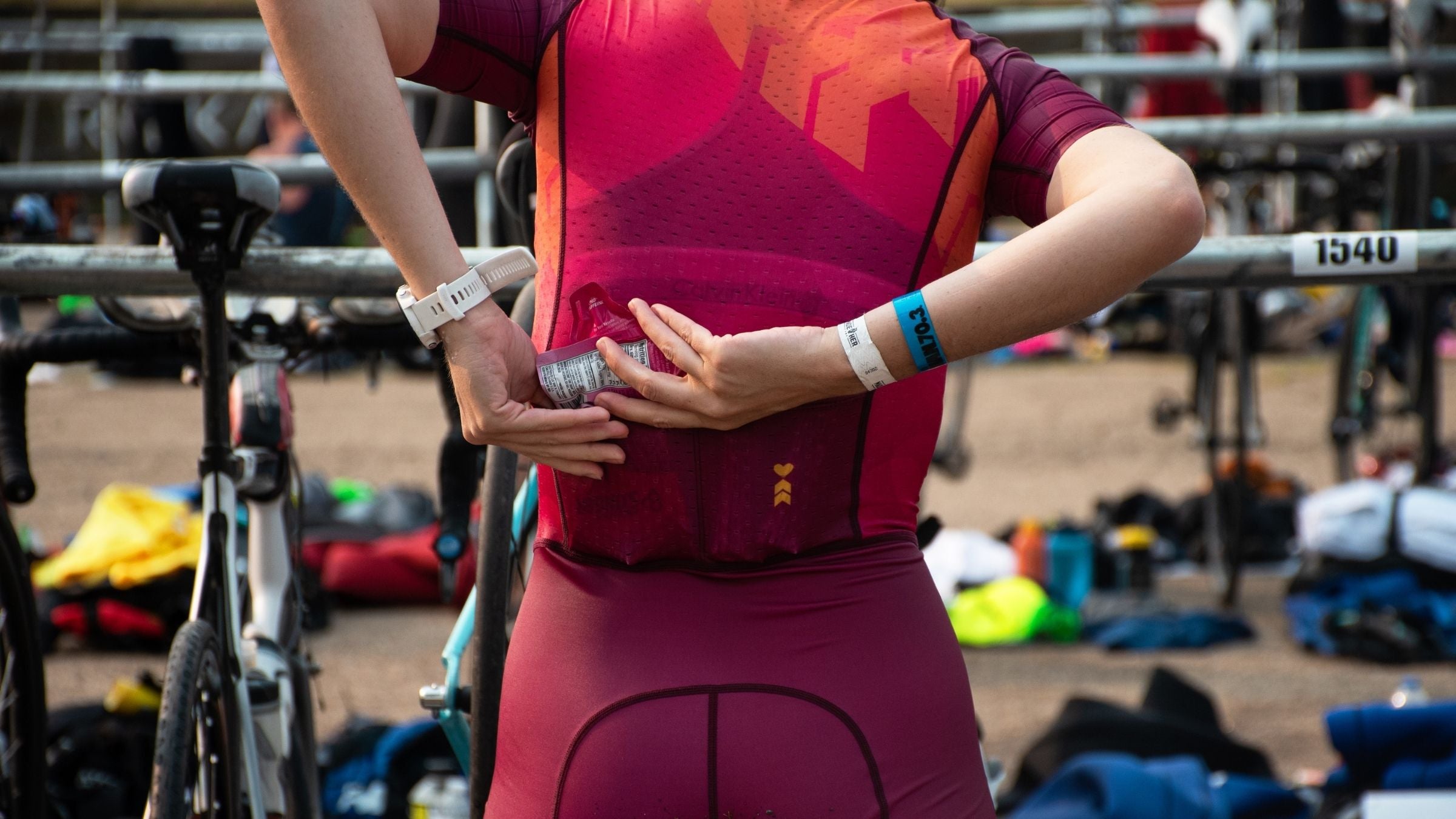Why Triathletes Are Unique When It Comes to Fueling

(Photo: Hannah DeWitt)
“The science just doesn’t exist.” That’s performance sports nutritionist, Scott Tindal, talking about the research behind fueling for triathlon. He’s worked with elite athletes across a wide variety of sports, from the National Hockey League to the America’s Cup, but triathlon nutrition, he says, can be tricky to perfect. It was only when he began working with professional and amateur triathletes that recognized the unique nutritional challenges of triathlon. “It’s not just the endurance nature of triathlon, lasting up to 17 hours,” Tindal said. “It’s the three sports in one combination of swim-bike-run that makes fueling for triathlon incrementally more difficult than a single discipline.”
RELATED: The Triathlete’s Guide to Race Fueling for Every Distance
A lack of specific multisport research
For starters, there’s a dearth of science-based research on triathlon. “Very few studies have been performed on triathletes in terms of fueling for training and racing,” he said. To date, most scientific research on fueling and hydration during endurance exercise have been conducted on a single sport, such as cycling or running and not on athletes that ride after a swim and run after a bike ride.
By way of example, Tindal references several studies that demonstrate positive correlations between carbohydrate intake and performance in endurance events. However, those studies and the outcomes are not necessarily practical for triathletes who must run off the bike. “When you transition from the bike to the run, your gut is under quite different mechanical stress than on the bike,” Tindal said. “You’re quite literally bouncing up and down!”
What type of fuel
The type of carbohydrate you consume is also particularly important for triathletes to consider, given the multi-disciplinary nature of triathlon. Each athlete is an individual and how the gut responds to certain carbohydrates will vary. For example, the consumption of high concentration carbohydrates in liquid form can result in fluid being drawn into the gut to dilute the hypertonic solution. This can cause lower gastrointestinal (“GI”) issues such as cramping, flatulence, and potentially diarrhea. In contrast, in order to avert GI issues you need an increased rate of gastric emptying. That’s why Tindal prefers to see athletes consume solid food on the bike.
“I recommend athletes practice their race fueling during training with carbohydrates in the form of bars, gels, and chews, while utilizing a hypotonic electrolyte solution and water to optimize hydration,” Tindal said. “This strategy allows for optimal fueling, while reducing the risk of GI issues that plague so many athletes.”
RELATED: Five Nutritionists Share How They Fuel Their Own Training
The timing and logistics
Another unique element that triathletes need to contend with, compared to a single discipline event, is the level of organization required. For instance, consider breakfast pre-race: Because the event starts with a swim (where you won’t be taking in any nutrition), if you don’t time things correctly or eat a snack pre-swim, you could be going a few hours without any nutrition, depending on the race duration and your level of ability. That could have you bonking before the race is even fully underway. “Each athlete needs to have a detailed plan of what they’re going to consume and when they’re going to consume it within the context of the race,” Tindal said. “Even a science-based approach will fall apart if you can not practically execute it!”
The final piece of the triathlon nutritional puzzle for Tindal is more about an athlete’s race set-up than it is about what they plan to eat. “What’s your bike set-up? How many bottles are you carrying? Will you wear a fuel belt on the run?” The best-laid plans will come undone if you can’t execute them properly in a race situation. That’s why Tindal requires his athletes to create a detailed plan outlining the bottle set-up they will start with on the bike, as well as on the run, what they intend to pick up at aid stations, and how they will use special needs bags, if available.
RELATED: Are You Doing Thirst Right? The Science Says Probably Not
The key to all of this, in Tindal’s mind, is to test and practice as many elements as possible in training. “If you only practice each discipline in isolation, you’re likely to encounter significant issues in the race,” he said. You need to practice your nutrition in multi-discipline race simulations. “If you haven’t practiced biking after a swim or running after a bike, you have no idea how the carbohydrate you consume on the bike is going to sit after a swim or during the run,” he said.
He recommends that athletes attempt several trials before discarding a nutrition protocol, and to change just a single element at a time so you can identify what is working and what isn’t. All of Tindal’s athletes use this methodology as they prepare for key events. “Test, measure, learn, repeat!”
Scott Tindal holds a Bachelors in Science (Physiotherapy) from the University of Sydney, a Masters in Science (Sports Medicine) from the University of London, and a post-grad diploma in Performance Nutrition (ISSN). He is the co-founder of Fuelin, an app-based personalized nutrition coaching program.